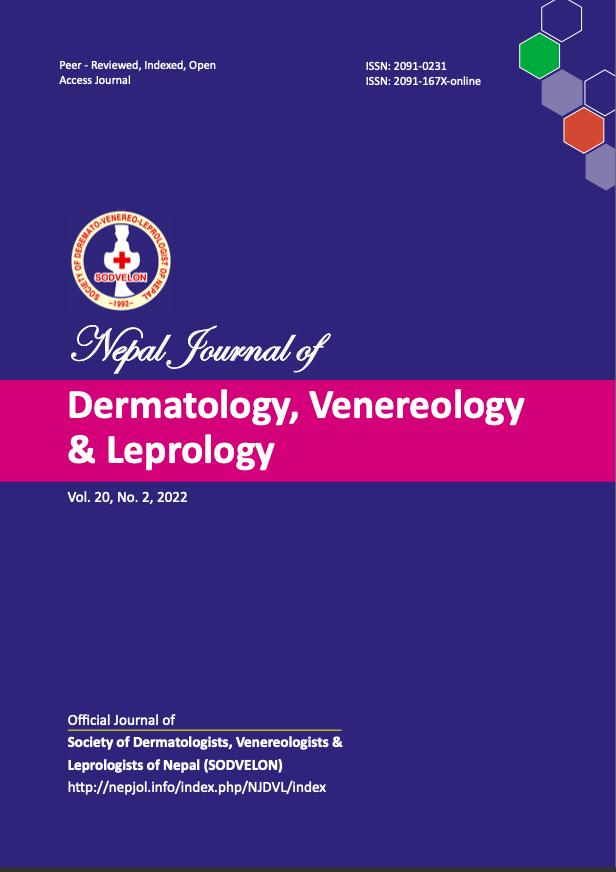Quality of Life in Nepalese Patients with Non-Scarring Alopecia: A Cross-Sectional Observational Study at a Tertiary Center
DOI:
https://doi.org/10.3126/njdvl.v20i2.45090Keywords:
Alopecia, Alopecia areata, Androgenetic, DLQI, Hair loss, Quality of lifeAbstract
Introduction: Alopecia is a dermatological condition characterized by the loss or reduction of hair. Alopecia areata and androgenetic alopecia are fairly common hair disorders. Hair loss causes a significant impact in person’s life which may lead to loss of self-confidence and distorted body image.
Materials and Methods: All consenting patients with alopecia areata and androgenetic alopecia, presenting to the out-patient department from September 2020 to August 2021 were enrolled based on convenience sampling method in this observational study. Ethical clearance was obtained from the ethical review committee of same institute (IRC protocol no.9/2021). All patients completed the Nepali Dermatology Life Quality Index questionnaire. Statistical Package for Social Studies version 25 was used for statistical analysis. Mean scores between groups were compared with Mann-Whitney U test.
Results: Out of 142 patients, there were 79 (55.6%) males and 63 (44.4%) females. There were 48 (33.8%) patients of alopecia areata while ninety-four (66.2%) had androgenetic alopecia. The mean total of Dermatology Life Quality Index score was 8.16 (±6.126). Mean score of females was 9.16±5.858 which was significantly higher than that of males 7.37±6.258 (p<0.05) and the score of the androgenetic patients (9.45±6.094) was significantly higher than that of areata patients (5.65±5.417) (p<0.001). All sub-domains of the questionnaire were impaired more in female. Increasing duration of the disease and hair loss in any first degree relative increased the impairment in quality of life significantly.
Conclusion: The quality of life in females were more affected as compared to males in both kinds of hair loss. However, patients with androgenetic alopecia had a greater impairment than patients with alopecia areata in our population.
Downloads
Downloads
Published
How to Cite
Issue
Section
License
Copyright (c) 2022 Society of Dermatologists, Venereologists and Leprologists of Nepal

This work is licensed under a Creative Commons Attribution 4.0 International License.
Copyright on any research article is transferred in full to Nepal Journal of Dermatology, Venereology & Leprology upon publication. The copyright transfer includes the right to reproduce and distribute the article in any form of reproduction (printing, electronic media or any other form).




